The Puffing Billy Railway is a 2 ft 6 in narrow gauge
heritage railway in the Dandenong Ranges near
Melbourne, Australia. The primary starting point, operations and administration centre, main refreshment room (also selling souvenirs) and ticket purchasing are located at Belgrave station. Journeys may also be commenced at out-stations of which some have limited facilities for the purchase of tickets, refreshments and souvenirs. Tickets usually may also be purchased from the conductor aboard the train.
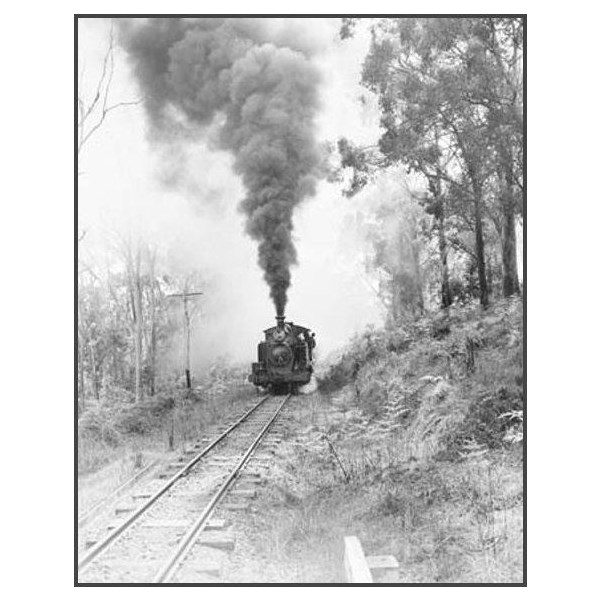
Puffing Billy on It's 60th birthday 1962
The railway was originally one of five narrow gauge lines of the Victorian Railways opened around the beginning of the 20th century. It runs through the southern foothills of the Dandenong Ranges to Gembrook. Being close to the city of
Melbourne and with a post-preservation history spanning over 50 years, the line is one of the most popular steam
heritage railways in the world, and attracts tourists from all over Australia and overseas.
The Puffing Billy Railway is kept in operation through the efforts of volunteers of the Puffing Billy Preservation Society, although intensive year-round operations have led to a few dozen paid employees to keep things going behind the scenes.
The railway aims to preserve and restore the line as near as possible to how it was in the first three decades of its existence, but with particular emphasis on the early 1920s
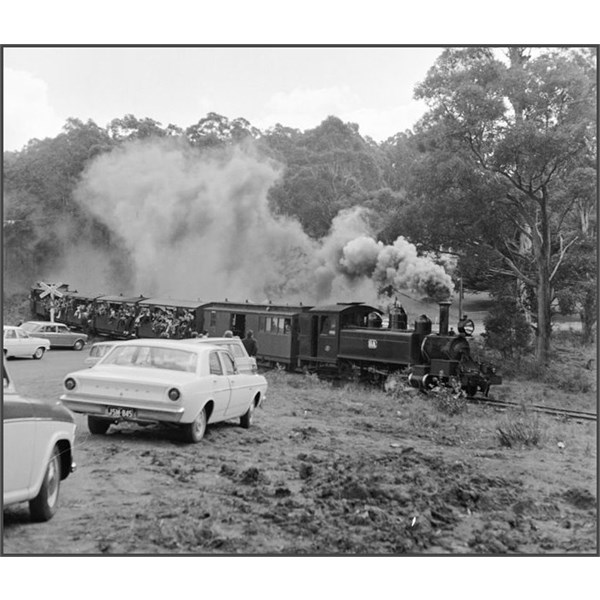
Cars wait at rail crossing for Puffing Billy to pass 1968
Operations are centred on Belgrave, which houses the main offices of the railway (other offices are located at
Emerald) as
well as the locomotive running shed and locomotive workshops. It is also the base for track maintenance operations.
A popular feature of a ride on Puffing Billy is sitting on the ledge of the open-sided carriages (see picture).
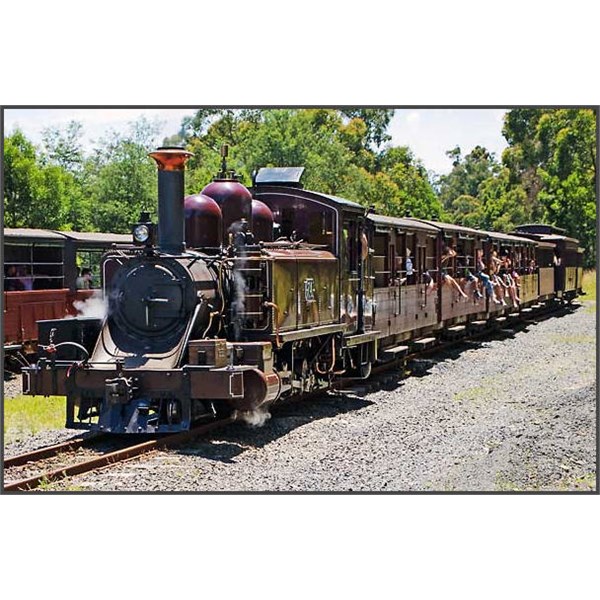
Puffing Billy and the ledge of the open-sided carriages
The railway owns every remaining narrow gauge locomotive of the former Victorian Railways, and has restored to operating condition all except one, although not all are in serviceable condition at any one time. This fleet comprises five restored and one unrestored 2-6-2T NA class locomotives (3A is unrestored, while 6A, 7A, 8A, 12A and 14A have all been restored), and one G class Garratt (G 42) locomotive. All are restored, or being restored, to represent different eras in their working life.
The railway also has a number of other steam locomotives from various sources in its museum collection, either on static display or in operating condition. These include a Peckett 0-4-0ST and Decauville 0-4-0T formerly from the West
Melbourne Gasworks, and a Climax geared locomotive from the Tyers Valley Tramway. None of these locomotives are powerful or fast enough to operate on regular
services, however they can occasionally be seen on special trains and at events such as Thomas the Tank Engine days.

Decauville loco on Puffing Billy Railway
Puffing Billy also offers driver experience days on the smaller steam engines. The Climax engine has been restored for this purpose as this engine has a commodious driving cab and is unique in Australia.
The railway also operates three diesel locomotives which are used on days of total fire ban, plant or works trains, or when insufficient steam locomotives are available, including in emergencies. The diesel locomotives originally operated on railways in Tasmania (D21, formerly V12) and Queensland (DH5, formerly DH5 and later CC02, and DH31, formerly DH59), and were regauged and rebuilt for use on the Puffing Billy Railway.
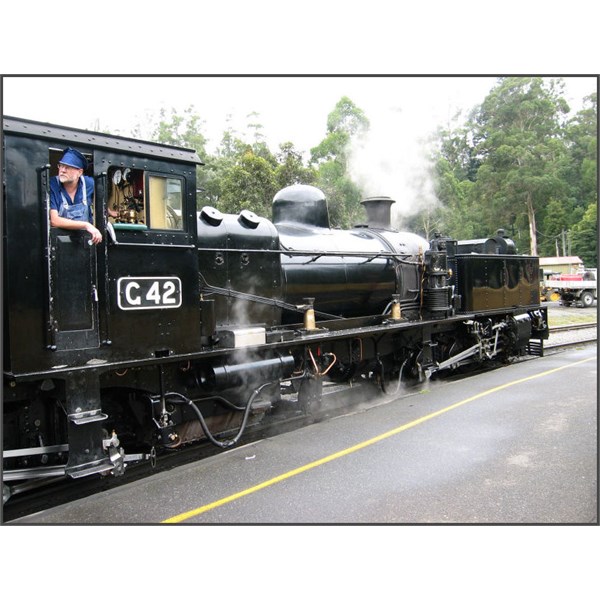
Puffing Billy Railway Garratt Locomotive G42
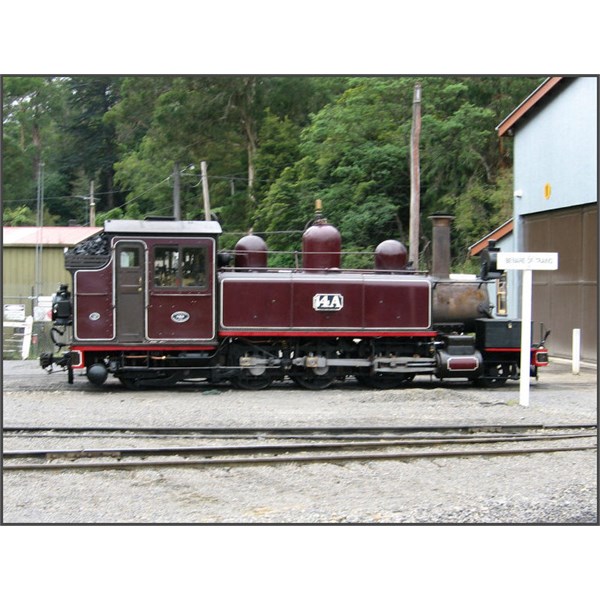
Puffing Billy Railway steam locomotive No. 14A
There is also a diesel Rail Tractor (NRT 1) used mainly for shunting rolling stock in association with the Carriage Workshops. The mainstay of the carriage fleet are the 15 NBH open-sided carriages built specially for tourist traffic on the Gembrook line by the VR between 1918 and 1919, and a further 10 vehicles built to the same or similar design in the preservation era. However, there are also a number of enclosed carriages, both saloon and compartment cars. In addition, four carriages were obtained from the Mount Lyell Railway in Tasmania after its closure in 1963, and regauged and reclassified for Puffing Billy use, numbered 1-4NAL. They are named Mt Lyell, Double Barril,
Rinadeena & Teepookana to reflect their Tasmanian
Heritage. These vehicles are now used as first-class carriages and used primarily on the Luncheon train and Dinner train.
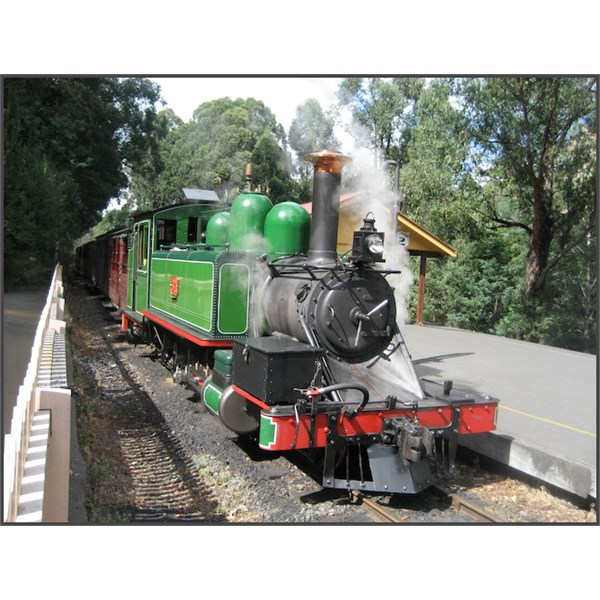
Puffing Billy train at Lakeside station
Several carriages have been temporarily converted to include a guard's compartment. A number of NQR low-sided goods trucks have also been modified for passenger use, making them similar to the NBH carriages. Another three NQR trucks have been fitted with seats but no roof and are only used during the summer peak season.
The line was opened in 1900 to serve the local farming and timber community. It originally ran from Upper Ferntree Gully station, the terminus of the broad gauge line from
Melbourne and now part of
Melbourne's suburban railway system, but it now begins at Belgrave.
The train, known to the locals as "Puffing Billy" amongst other names, stopped running in 1953 after a landslide blocked the line between Selby and
Menzies Creek, and it was formally closed in 1954. Today the former line between Upper Ferntree Gully and Belgrave is serviced by Metro Trains
Melbourne suburban electric trains, while the line beyond Belgrave has been reopened by the Puffing Billy Preservation Society.
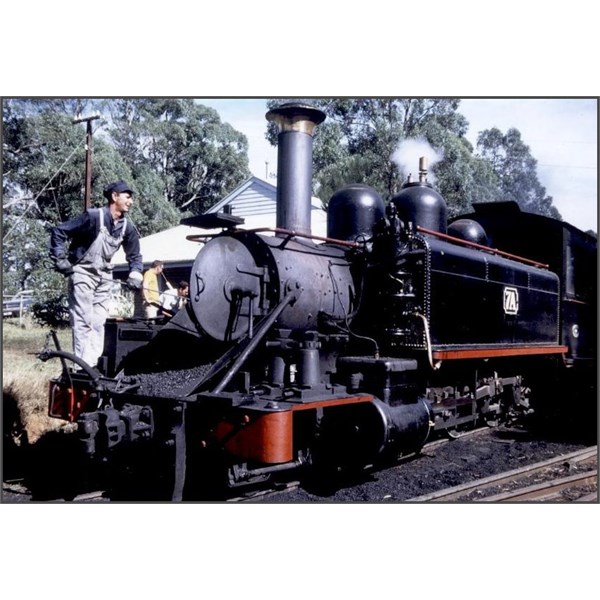
V.R. NA Class 7A at Menzies Creek on 12 April 1971 with fireman clearing ash from the smokebox
Following closure, a few "farewell specials" operated on the remaining usable section to Belgrave, which proved very popular. On 1 October 1955, the Puffing Billy Preservation Society was formed to keep the train running indefinitely. This continued until 1958 when the line to Belgrave was closed for conversion to a broad gauge, electrified suburban line. The society then started work on restoring the Belgrave to Lakeside section, and on 28 July 1962, restored train operation between Belgrave and
Menzies Creek.
Subsequently, operations were gradually extended over the remainder of the original line through Clematis to
Emerald in 1965 and Lakeside in 1975 before reaching Gembrook, which was completed in 1998, reopening on 18 October of that year.

Puffing Billy travels through the Dandenong Ranges 1962
Today the railway operates daily (except for Christmas day) as a popular tourist activity over 15
miles with original steam engines, and is operated with some of the railway practices from the Victorian Railways 1900 to 1930 era, such as using the "Staff and Ticket" safeworking method and having conductors on board the trains. In the 2014/15 financial year, Puffing Billy carried 349,270 passengers, up more than 45,000 from the previous financial year.
.